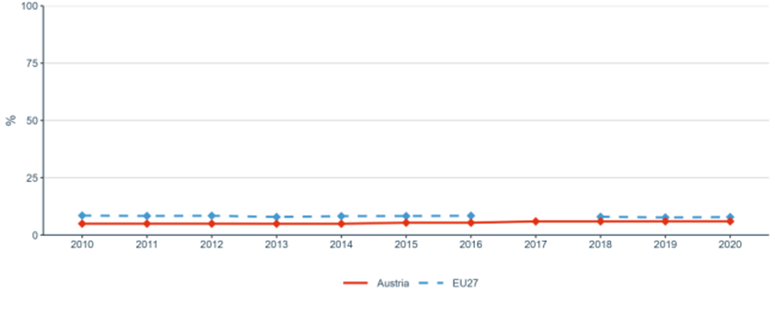ERA Country Report 2023
Austria
Edited by Pijus Krūminas (Visionary Analytics)
as part of ‘Development of the ERA Scoreboard, the ERA Dashboard and the Regular Reports’ project for the European Commission, Directorate-General for Research and Innovation under Framework Contract N° 2018/RTD/A2/OP/PP-07001-2018 Lot 2 (EDAR)
Click here to download this country report![]()
- Table of contents
-
ERA Country Report 2023: Austria
1. National context
1.1. Overview of the ERA policy agenda implementation
1.2. Policy context
2. Assessment of the Implementation of the ERA Policy Agenda and ERA Priorities
2.1. ERA Priority 1: Deepening a truly functional internal market for knowledge
2.2. ERA Priority 2: Taking up together the challenges posed by the twin green and digital transition and increasing society’s participation in the ERA
2.3. ERA Priority 3: Amplifying access to research and innovation excellence across the Union
2.4. ERA Priority 4: Advancing concerted research and innovation investments and reforms
3. Country-specific drivers and barriers
4. Final remarks
5. Bibliography
6. Annexes
6.1. Annex 1: Graphs
ERA Country Report 2023: Austria
|
Key takeaways:
|
1 Research, Technology, and Innovation Strategy.
1. National context
1.1. Overview of the ERA policy agenda implementation
According to the European Innovation Scoreboard 2023, Austria emerges as a strong innovator, surpassing the average benchmarks set by other Member States (MS) and Associated Countries (AC). However, Austria’s performance is increasing at a lower rate than the EU’s average. The European Semester Report for Austria highlights the country’s challenges in relation to green transition and commercialisation of research results through technology and knowledge-intensive start-ups. The Austrian Government has committed to 15 ERA Policy Actions. Specific attention is directed towards open science, international collaboration as well as the green and digital transition.
The national blueprint for ERA enactment in Austria is outlined in the overarching Research, Technology, and Innovation (RTI) Strategy 2030. This long-term strategy underscores the imperative for Austria to actively assume a leadership role within the ERA. The strategy is complemented by a comprehensive roadmap for ERA implementation, encapsulated within the Austrian National ERA Action Plan 2022-2025. These policy actions serve as a catalyst for the attainment of objectives, which align with both the national RTI strategy and ERA goals.
1.2. Policy context
The leading institution for the development and implementation of national R&I policy and ERA is the Austrian Federal Ministry of Education, Science and Research (BMBWF) in close cooperation with the Federal Ministry for Climate Action, Environment, Energy, Mobility, Innovation and Technology (BMK), which likewise supports various research and innovation programmes and projects. The federal government also promotes various research institutions and initiatives, such as the Austrian Science Fund (FWF) for developing basic research, and the Austrian Research Promotion Agency (FFG) focusing on applied research associated with industry.
In December 2022, BMBWF adopted the Austrian National ERA Action Plan 2022-2025 (ERA NAP). This plan contains 12 initiatives with concrete measures to implement the Pact for Research and Innovation in Europe and the ERA Policy Agenda 2022-2024. The national initiatives covered include open science, human resources development, gender equality, citizen science, energy transition, research infrastructure, and international cooperation.
The main document reflecting the general R&I policy in Austria is the RTI Strategy 2030. The strategy is based on the OECD's 2018 analysis of Austria's innovation policy, the European Commission's concept of Smart Specialisation, and cross-cutting issues such as Sustainable Development Goals (SDGs), digitalisation, and open science. The strategy is accompanied by RTI Pacts, which operationalise the targets and fields of activity. Compared to the first RTI Pact (2021-2023), the budget for R&I has increased by around 31% (to EUR 5,048.673 million) with the adoption of the second RTI Pact (2024-2026). Additionally, the Austrian Research and Technology Report (2023) presents the R&I situation in Austria and covers the status of implementation of the RTI Strategy.
Speaking of specific relevant initiatives, one of them focuses on the Austrian participation in (the recently concluded) European discussions to revise the Strategic Energy Technology (SET) Plan, aiming to protect national interests and contribute valuable technical insights from energy policy experts to enhance the plan's revision process. In terms of enabling the open sharing of knowledge and research outputs, BMBWF has been actively involved in the development of the European Open Science Cloud (EOSC), which aims to create a virtual environment for open and seamless access to data, services, and expertise for research across Europe. In 2022, the Council of Ministers adopted the "Open Science Policy Austria”, which provides the basis for Austria’s contribution to EOSC.
2. Assessment of the Implementation of the ERA Policy Agenda and ERA Priorities
This section offers an evaluation of the advancements and key achievements related to Austria's engagement for the ERA Actions it as committed to, which fall under all four ERA Priorities. The qualitative data presented primarily stems from the ERA Dashboard, complemented by qualitative insights obtained from the OECD STIP Survey and supplementary desk research.
The quantitative information presents the most recent data available for the ERA Scoreboard and ERA Dashboard indicators. However, in some cases, the available data pre-dates the ERA Policy Agenda. As this report will serve as a baseline for reporting in the future, the longer-term trends covering the last ten years are presented. The indicators falling under each ERA priority are provided below, and the general indicators are outlined in Table 1. More detailed information on the data and graphs can be found in Annex 1.
| Indicator | Most recent EU average | Most Recent Metric |
| Gross Domestic Expenditure on R&D (GERD) as a percentage of GDP |
2.26 (2021) |
3.19 (2021) |
| Government Budget Allocations for R&D (GBARD) as a share of GDP |
0.76 (2021) |
0.81 (2021) |
| Researchers (in full-time equivalent) per million inhabitants |
4,483.4 (2021) |
6,163.0 (2021) |
| Business Enterprise expenditure on R&D (BERD) as a percentage of GDP |
1.49 (2021) |
2.2 (2021) |
Source: compiled by research team based on the ERA Scoreboard and ERA Dashboard indicators
2.1. ERA Priority 1: Deepening a truly functional internal market for knowledge
2.1.1. State of play in the implementation of the ERA Actions
The Austrian ERA NAP 2022-2025 introduces a set of initiatives that take into account the commitment to ERA Actions 1-9 for deepening the internal market for knowledge. These specific initiatives are discussed in more detail below.
In terms of ERA Action 1: Enable Open Science, including through the European Open Science Cloud (EOSC), Austria has dedicated ERA NAP 2.1 and 2.2 initiatives, to expedite the integration of open science principles both within academic institutions and beyond. The establishment of Open Science Austria (OSA) in 2021, and the Austrian Micro Data Centre (AMDC) in 2022 illustrate the recent national developments in this field. The Open Science Austria has been cited in the EOSC 2021 Survey as a key policy relevant for EOSC. Similarly, Austria’s contributions towards this action are manifested in the appointment of a Mandated Organisation to the EOSC Association.
ERA NAP 2.1 also covers ERA Action 2:Propose an EU copyright and data legislative framework for research by addressing the recommendations of the legal studies commissioned by the BMBWF and the European Commission. The baseline report "Open Access in Transition", completed in February 2022, is planned to be followed-up by a study on the legal and administrative framework for open science in Austria. In this context, key repositories for securing data storage and re-use such as AUSSDA - The Austrian Social Science Data Archive and Phaidra have been identified as best practices by EOSC.
Austria is also contributing to ERA Action 3: Reform the Assessment System for research, researchers and institutions, particularly by implementing the ERA NAP 2.3. The initiative aims to review how research is currently assessed, analyse the outcomes, and suggest specific actions to improve the research evaluation system for academics and researchers at Austrian universities.
ERA Action 4: Promote attractive research careers, talent circulation and mobility is also considered in ERA NAP 2.3. For example, the Higher Education Conference working group on "Careers in research in the context of the European Research Area" (created in May 2022) develops recommendations for concrete measures to increase permeability, advance existing career models, and implement European instruments. Another example of a specific national measure is the financing agreement (2021) between BMBWF and the Austrian Science Fund (FWF), which is aimed to enhance Austria's scientific and research workforce, focusing on both quality and quantity through research-oriented education.
In terms of ERA Action 5:Promote gender equality and foster inclusiveness, Austria has undertaken multiple measures under ERA NAP 2.4. The goal of the initiative is to further develop gender-equitable structures and processes and integrate gender dimensions in research and education. It is aligned with the general RTI Strategy 2030 which aims to increase the proportion of women amongst graduates in STEM and technical subjects. Another relevant initiative is the National Strategy on the Social Dimension of Higher Education (2017), which aims to improve the participation and success of underrepresented groups and groups with specific needs in higher education. In addition, special funding programmes supporting gender inclusivity are being introduced in Austria, such as “Human Potential” (2022). Moreover, various actions are taken to increase visibility and awareness of the gender dimension in research, such as the Gabriele Possanner Awards, Diversitas Awards, and the Gender Research Day.
ERA NAP 2.12 relates to ERA Action 6:Protect academic freedom in Europe. It provides measures, such as stakeholder involvement and the exchange of experiences, for preventing foreign influence on the national RTI system and strengthening the overall security of RTI institutions.
As for ERA Action 7: Upgrade EU guidance for a better knowledge valorisation, the ERA NAP 2.11 initiative introduces measures to increase the exploitation of research findings, strengthen the start-up culture, and double the number of academic spin-offs by 2030. For example, the Spin-off Fellowships funding programme helps researchers to implement their spin-off ideas. Another recent national programme, "Cooperation Structures (KOOP)", has a similar goal of supporting science-industry partnerships.
Regarding ERA Action 8: Strengthen research infrastructures, Austria’s RTI Strategy 2030 sets a goal of expanding research and technology infrastructure (RTIs). As part of the Strategy, the Austrian Research Infrastructure Action Plan 2030 was created. Its implementation is specifically underlined in the ERA NAP 2.10 initiative.
Concerning ERA Action 9: Promote international cooperation, Austria has outlined the measures under the initiative of ERA NAP 2.12, such as building a Science Diplomacy community in Austria.
All these examples of various initiatives show that Austria is truly determined to develop its R&I system and that it is aligned with principles such as open science and gender equality.
2.1.2. Progress towards achieving ERA Priorities
The importance of Sub-priority 1.1: Open Science in Austria is evident in the share of open-access publications (with DOI) (approximately 49% in 2019) in comparison to the EU-27 average (39% in 2019). Austria's focus on open science in its RTI Strategy has led to a notable advancement from 2009 when the respective values in Austria and the EU both stood at around 34% (Figure 5 in Annex 1).
Regarding Sub-priority 1.2: Research infrastructures, the number of European research infrastructures to which Austria financially contributes in terms of operational cost, was 13 in 2021, slightly below the EU-27 average of 16 (Figure 6 in Annex 1).
Despite the above-mentioned efforts related to Sub-priority 1.3: Gender equality, equal opportunities for all and inclusiveness, key indicators like the share of women in grade A positions within Higher Education Institutions (HEIs) (Figure 7 in Annex 1), the proportion of women among doctoral graduates in STEM fields (Figure 8 in Annex 1), the proportion of papers with mixed gender authorship (Figure 9 in Annex 1) and the proportion of women in authorships of the top 10% most cited publications (Figure 10 in Annex 1), suggest that gender equality in research remained largely unresolved and stagnant as of 2018-2020. In all four aspects Austria lagged behind the EU-27 average. Only the Women in Digital Index in 2022 (Figure 11 in Annex 1) is relatively better for Austria as it is slightly above the EU-27 average. Consequently, the European Semester Report 2022 highlights that the potential of women in the Austrian labour market continues to be underutilised. The 2023 report also notes a high gender pay gap and persisting gender gaps in tertiary education in STEM fields (even if the overall share of STEM graduates is very high in the EU context).
As for Sub-priority 1.4: Researchers’ careers and mobility and research assessment and reward systems, the job-to-job mobility of Human Resources in Science and Technology (HRST) indicator (Figure 14 in Annex 1) shows that Austria closely follows the EU-27 average, albeit slightly higher. Yet, the share of foreign doctorate students as a percentage of all doctorate students (Figure 12 in Annex 1) is significantly higher than the EU-27 average (around 37% compared to 23% in 2020) and indicates an upward trend. Moreover, with regard to new doctorate graduates per 1,000 inhabitants aged 25-34, Austria’s performance is positively stable, as in 2013-2020 it had approximately 0.9 new doctorate graduates per thousand population (Figure 13 in Annex 1). This stability contrasts with the EU-27 average which varied and, from 2018, significantly decreased. All of this suggests that Austria provides good conditions for foreign students to contribute to the national R&I system.
Indicators reflecting the progress made towards Sub-priority 1.5: Knowledge valorisation show that Austria performs better than the EU-27 average. The share of public-private co-publications per 1 mio inhabitants in Austria has been steadily growing (Figure 15 in Annex 1) and in 2021 was almost three times higher than the EU-27 average (around 498 publications per million population vs. 134 in the EU). Austria also exhibits a higher number of PCT patent applications divided by GDP in million euros compared to the EU-27 average (Figure 16 in Annex 1). From 2010 to 2015 (latest available data), Austria’s measure was roughly two times higher than the EU-27 average (approx. 0.0045 vs. 0.0025). Positive trends are likewise observed in terms of business enterprise researchers in full-time equivalent per thousand employees in industry and business enterprise researchers as a share of the national total (respectively Figures 17 and 18 in Annex 1): in 2020, these measures in Austria equalled 9.9 and 63.3 (the EU-27 average accounted for 6.89 and 55.28 respectively). Moreover, the share of innovating firms collaborating with HEIs or public/private research institutions (Figure 19 in Annex 1) increased both in Austria and in the EU between 2010 and 2020, maintaining a gap in which the Austrian values are higher, reaching 23.19 in 2020.
Furthermore, Austrian programmes and initiatives appear several times among the EU-selected best practices for knowledge valorisation. One such example is the annual hackathon “Digital Solutions for Societal Challenges”, organised by the University of Vienna in collaboration with the City of Vienna since 2020. The hackathon brings together students and researchers from different disciplines to work on creative and innovative solutions for current societal challenges using digital technologies. The development of the proposed solutions is further supported by the City of Vienna and the University of Vienna.
As for Sub-priority 1.6: Scientific leadership in the EU, Austria excels, exhibiting a high Academic Freedom Index 2021 of 0.95 (Figure 20 in Annex 1). This signifies robust protection for academic liberties; however, it is worth noting the slight decline post-2020 during the COVID-19 restrictions. Meanwhile, the number of scientific publications among the top 10% most cited publications worldwide as a percentage of all publications (Figure 21 in Annex 1) has remained relatively stable since 2010 and was in line with the EU-27 average of around 10% in 2020.
Lastly, in relation to Sub-priority 1.7: Global engagement, the international co-publications with non-EU partners per 1000 researchers in the public sector have increased significantly from 1177 in 2010 to 2303 in 2021 (Figure 22 in Annex 1). In comparison, the EU-27 average almost doubled in that period, but it still remains below the Austrian figures. This signifies that Austria's focus on international collaboration has paid off. The European and international co-patenting in EPO applications at national and EU level (Figure 23 in Annex 1) was lower in Austria than in the rest of the EU until 2013. In 2013 (latest available data), the Austrian value surpassed the EU-27 average (1488 compared to 1461).
2.2. ERA Priority 2: Taking up together the challenges posed by the twin green and digital transition and increasing society’s participation in the ERA
2.2.1. State of play in the implementation of the ERA Actions
The Austrian government has committed to four ERA policy actions under Priority Area 2 (all but action 13) - all of them are covered by ERA NAP initiatives 2.5-9.
ERA Action 10: Make EU research and innovation missions and partnerships key contributors to the ERA is also one of the key objectives of the RTI Strategy 2030. Increased participation in European missions and partnerships is specified in Austria’s RTI Pact 2021–2023 and 2024-2026. In addition, it is considered in the ERA NAP 2.6 initiative, where importance is stressed on the coordination and the monitoring of participation provided by the "Austrian Partnerships Forum".
Regarding ERA Action 11: An ERA for green transformation, ERA NAP 2.7 and 2.8 initiatives underline measures with a special emphasis on fulfilling the European Strategic Energy Technology (SET) Plan and developing green hydrogen technologies. One recent key national policy is "Energy transition" (2022), which aims to support innovative solutions for the long-term reduction of energy consumption and a broad use of renewable energy sources.
Another challenge-based action is ERA Action 12: Accelerate the green/digital transition of Europe’s key industrial ecosystems. ERA NAP 2.9 supports this goal and highlights the need to closely participate in the development and implementation of ERA Industrial Technology Roadmaps, as well as collaborate in EU partnerships and missions for the green and digital transition. Regarding recent national policy initiatives, in 2022, the Austrian government announced “Digital and key technologies” and “Mobility transition” policies, which encompass a range of funding instruments promoting transition.
Despite the absence of official commitment, Austria also has key initiatives in place related to ERA Action 13: Empower Higher Education Institutions, such as University Performance Agreements. These are three-year contracts between the BMBWF and the public universities, which include specific targets and indicators for teaching, research, and governance.
ERA Action 14: Bring Science closer to citizens is dedicated to bridging the gap between science and citizens, whose role is pivotal in ensuring the broader impact of R&I. ERA NAP 2.5 is focused on Austria’s participation in various citizen science initiatives, such as the Horizon Europe-funded project "Plastic Pirates go Europe!", and national citizen science projects as part of “Sparkling Science 2.0".
2.2.2. Progress towards achieving ERA Priorities
Concerning Sub-priority 2.1: Challenge-based ERA Actions, an examination of Government Budget Allocations for R&D (GBARD) by NABS in energy; environment; transport, and telecommunications and other infrastructureprovides insight into Austria's budget allocation for these sectors. As displayed in Figure 24 in Annex 1, across all three categories, Austria is below the EU-27 average. The data on Environment demonstrates a peak in 2020 for Austria, when it almost reached the value for the EU-27 average. While the gap for Energy is comparatively lower, it remains at half of the EU-27 average.
Another indicator for challenge-based ERA Actions is GBARD allocated to European transnational, bilateral, or multilateral, public R&D programmes per FTE researcher in the public sector (Figure 25 in Annex 1). Here, Austria shows better results than the EU-27 average. The largest gap was observed in 2018 when around EUR 2414 were allocated per FTE researcher in Austria while the EU-27 average stood at EUR 1789. However, as the most recent data shows, in 2020, the gap narrowed as the value in Austria decreased to EUR 2070, while the EU-27 average remained the same.
Furthermore, three indicators shed light on the government's measures towards the green transition. Firstly, the environmentally related government R&D budget as a percentage of the total government R&D (Figure 26 in Annex 1) shows that since 2014, on average, the Austrian government invests in green transition less than half as much compared to the EU-27 average (with an exception in 2020, when the funding was similar). For example, in 2021 Austria allocated 0.81% of the total government R&D budget to environmentally related R&D, while the EU-27 average was 2.7%. Moreover, the national public and private investments, as indicated in the SET Plan progress report 2021 (Figure 27 in Annex 1), reveal Austria's investment trends in energy technology. The trend in both Austria and the EU was similar until 2016, when the values for Austria started to increase, reaching a maximum in 2020. In terms of OECD Patents on environment technologies (Figure 28 in Annex 1), Austria’s performance is somewhat closer to the EU-27 average, yet still slightly above the EU-27 benchmark (for example, 13.95 vs. 12.9 patents in 2018).
Looking at Sub-priority 2.2: Synergies with education and the European Skills Agenda, remarkable progress was observed in Austria between 2016 and 2019 in relation to the share of researchers receiving transferable skills training (Figure 29 in Annex 1). Specifically, this proportion increased from 23.1% (2016) to 66.7% (2019), while the respective EU-27 averages decreased from 49.5% to 46.3%.
Looking at Sub-priority 2.3: Synergies with sectorial policies and industrial policy, in order to boost innovation ecosystems, the combination of direct government support and indirect government support through R&D tax incentives as a percentage of GDP (Figure 30 in Annex 1) illustrates the Austrian government's approach to supporting innovation ecosystems. Its tax incentives increased from 0.22% of GDP in 2010 to around 0.36% in 2020: Austria confidently maintains its lead over the EU-27 average (which stood at 0.18% in 2020).
Lastly, in relation to Sub-priority 2.4: An active citizen and societal engagement in R&I in all its dimensions, the data on research in social innovation (publications related to 'social innovation' or 'social entrepreneurship') per million population (Figure 32 in Annex 1) reveals a fluctuating growth trend over the past decade. The publication rate surged from around 0.4 in 2010 to 3.7 in 2021, showcasing remarkable progress compared to the more moderate EU-27 average, which started from a similar baseline and reached 1.74. However, trust in science among Austrians appears to be slightly lower (41%) compared to the EU-27 average (43%) in 2021 (Figure 31 in Annex 1).
2.3. ERA Priority 3: Amplifying access to research and innovation excellence across the Union
2.3.1. State of play in the implementation of the ERA Actions
Austria has committed to ERA Action 17: Enhance public research institutions’ strategic capacity. This action is supported by national initiatives, such as KOOP, which fosters cooperative structures between public research entities and private enterprises.
2.3.2. Progress towards achieving ERA Priorities
In relation to Sub-priority 3.1: More investments and reforms in countries and regions with lower R&I performance, an indicator depicting the increase of total R&D expenditure expressed as a percentage of GDP (Figure 33 in Annex 1) suggests that Austria is performing similarly to the EU-27 average. Between 2011 and 2017 the number fluctuated each year before levelling off to a more stable EU-27 average of around 0.04% in 2018-2019. However, in 2020 both values decreased (0% for Austria and -0.04% for the EU-27 average).
2.4. ERA Priority 4: Advancing concerted research and innovation investments and reforms
2.4.1. State of play in the implementation of the ERA Actions
Austria has committed to ERA Action 19: Establish an ERA monitoring system. Besides monitoring the progress of implementation of each ERA initiative in Austria, there are some other examples of national initiatives supporting this ERA Action. The Austrian Micro Data Centre (AMDC), created in 2022, provides the opportunity to use administrative data for research and evidence-informed policy formulation. This was followed by a new programme of the Austrian Academy of Sciences (ÖAW) called “Data:Research: Austria", which funds research projects that make use of new opportunities provided by AMDC and other data archives.
2.4.2. Progress towards achieving ERA Priorities
With regard to Sub-priority 4.1: Coordination of R&I investments, Figure 34 in Annex 1 illustrates the share of public R&D expenditures financed by the private sector. Here, Austria performs below the EU-27 average (8%) with a share of roughly 5-6% throughout the past decade (2010-2020), which stood at around 8%.
3. Country-specific drivers and barriers
In general, Austria has a strong tradition of research and innovation and a well-developed research system, this allows Austria to better contribute to the achievement of the ERA Policy Agenda. This is reflected in the above description of progress towards ERA objectives, where Austria overperforms in several areas compared to EU-27 averages.
Austria has a strong and diversified R&I base, with a high level of R&I investments. Investing in R&I is an important lever for the government to try to position the country as an innovation leader. In addition, Austria has a well-developed public research infrastructure, with several universities and research institutes of internationally acknowledged excellence. Moreover, Austria has highly prioritised R&I in its national policy agenda, including the Government Programme 2020 – 2024 and the RTI Strategy 2030, with specific measures to support the development of a knowledge-based society and economy. The long-term vision in Austria helps to direct focus on prioritised areas to achieve anticipated results. Additionally, the country has a strong commitment to promoting international cooperation and participation in EU research programmes, which is likewise contributing to the fulfilment of ERA objectives.
On the other hand, some factors hinder the progress made on ERA Priority Areas in Austria. Austria’s target to become climate neutral by 2040 is even more ambitious than the EU’s target, and measures underpin these targets and show encouraging results. To achieve the highly ambitious targets for renewable energy and energy efficiency, Austria has taken important steps, however, challenges related to green transition remain, such as skills shortages, regulatory barriers, lengthy permitting procedures, environmentally harmful subsidies, high costs and public acceptance, as stated in the European Semester Report 2023. Furthermore, there are some challenges in terms of the commercialisation of R&I results. While Austria operates highly successful programmes to support linkages between science and business, such as the funding programme COMET (Competence Centres for Excellent Technologies), the country faces challenges in commercialising more R&I results. Technology and knowledge-intensive start-ups have been likewise identified in the European Semester Report as one of the greatest weaknesses in the Austrian R&I system. Strengthening Austria's domestic venture capital market could contribute to start-up dynamism and the expansion of start-ups and high-growth firms. The RTI Strategy 2030 (and ERA NAP) acknowledges these challenges in its objectives and aims, for example, to double the number of economically successful start-ups by 2030. While the high gender pay gap noted in the European Semester Report is a broader issue, it is also evident in graduation from STEM fields, which may spill over to R&I in a broader sense.
4. Final remarks
Austria is one of the strongest innovators, performing above the EU-27 average in many of the R&I indicators as seen in the European Innovation Scoreboard 2023. Nonetheless, the country has not yet achieved its objective of becoming an innovation leader, as was set out in Austria’s RTI Strategy 2020 and is now a target of the Strategy 2030.
The country’s support of the ERA Policy Agenda is evident as it has committed to 15 ERA Actions and proposed initiatives and measures to achieve them.3 Moreover, Austria’s focus on open science initiatives and international collaboration further highlights its commitment to shared policy goals.
Consequently, the indicators where Austria showed the most progress in the past decade relate to the share of publications in open access, and public-private and international co-publications. On the other hand, environmentally related investments and gender equality are below the EU-27 average, signifying the need for more attention to these issues.
5. Bibliography
Austrian Academy of Sciences (ÖAW). (n.d.). Data:Research:Austria. https://www.oeaw.ac.at/en/funding/funding-programmes/subsites/dataresearchaustria
BMAW, BMK, and FFG. (2022). Digital and key technologies. OECD STIP Compass. https://stip.oecd.org/stip/interactive-dashboards/policy-initiatives/2023%2Fdata%2FpolicyInitiatives%2F99995847
BMBWF. (2017). National strategy on the social dimension of higher education. https://www.sozialerhebung.at/sozdim/strategiepapier/Strategie_2017_englisch.pdf
BMBWF. (2021). Financing Agreement Between the Austrian Federal Ministry of Education, Science, And Research (BMBWF) And the Austrian Science Fund (FWF). https://stip.oecd.org/stip/interactive-dashboards/policy-initiatives/2023%2Fdata%2FpolicyInitiatives%2F99995576
BMBWF. (2022). Austrian Action Plan for the European Research Area (ERA-NAP) 2022-2025. https://era.gv.at/era/era-policy-agenda/austrian-national-era-action-plan-2022-2025/
BMBWF. (2022). Austrian Research and Technology Report. https://www.bmbwf.gv.at/en/Topics/Research/Research-in-Austria/Services/FTB.html
BMBWF. (n.d.). Forschungsinfrastruktur in Österreich. https://www.bmbwf.gv.at/Themen/Forschung/Forschung-in-%C3%96sterreich/Forschungsinfrastruktur.html
BMBWF. (n.d.). Universities. https://www.bmbwf.gv.at/en/Topics/Higher-education---universities/Higher-education-system/Universities.html
BMBWF, BMK, and BMAW. (2023). Austrian Research and Technology Report. Available at https://www.bmbwf.gv.at/dam/jcr:34611cfa-263e-4854-840e-a606dc0c02d2/FTB_2023_EN_bf.pdf
BMK and BMDW. (2022). FFG-HumanpotenzialRichtlinie. https://www.ffg.at/sites/default/files/guidlines/FFG-RL_Humanpotenzial_2022.pdf
BMK and FFG. (2022). Mobility transition. OECD STIP Compass. https://stip.oecd.org/stip/interactive-dashboards/policy-initiatives/2023%2Fdata%2FpolicyInitiatives%2F99995832
Centre for Social Innovation. (2022). Open Access im Wandel. https://era.gv.at/public/documents/4638/Open_Access_im_Wandel_bf.pdf
Climate and Energy Fund, Research Promotion Agency. (2022). Energy transition. OECD STIP Compass. https://stip.oecd.org/stip/interactive-dashboards/policy-initiatives/2023%2Fdata%2FpolicyInitiatives%2F99995830
Council of Ministers. (2022). Open Science Policy Austria. https://www.bmbwf.gv.at/dam/jcr:d0dad6b6-b94d-4e3e-8c4e-da12091be9b4/Open%20Science%20policy%20Austria%20eng..pdf
European Commission. (2022). 2022 European Semester Country Report - Austria. European Commission. https://commission.europa.eu/system/files/2022-05/2022-european-semester-country-report-austria_en.pdf
European Commission. (2023). 2023 European Semester Country Report - Austria. European Commission. https://economy-finance.ec.europa.eu/system/files/2023-05/AT_SWD_2023_620_en.pdf
European Commission. (2023). Digital Solutions for Societal Challenges – Hackathon. Repository of Best Practices https://ec.europa.eu/research-and-innovation/en/research-area/industrial-research-and-innovation/eu-valorisation-policy/knowledge-valorisation-platform/repository/digital-solutions-societal-challenges-hackathon
Federal Government of the Republic of Austria. (2020). Out of a Sense of Responsibility for Austria: Government Programme 2020–2024. https://www.bundeskanzleramt.gv.at/en/federal-chancellery/the-austrian-federal-government/government-documents.html
Federal Government of the Republic of Austria. (2020). RTI Pact 2021–2023. https://era.gv.at/public/documents/4490/RTI_Pact_2021_2023-1-1.pdf
Federal Government of the Republic of Austria. (2020). RTI Strategy 2030: Strategy for Research, Technology and Innovation of the Austrian Federal Government. https://era.gv.at/public/documents/4489/RTI_Strategy_2030-1-1.pdf
Federal Government of the Republic of Austria. (2022). RTI Pact 2024–2026. https://era.gv.at/public/documents/4835/RTI_Pact_2024-2026.pdf
Gareth O'Neill, & Stefania Martziou. (2022). Data of Survey on National Contributions to EOSC 2021 https://doi.org/10.5281/zenodo.7431678
Hollanders, H., Es-Sadki, N., & Khalilova, A. (2023). European Innovation Scoreboard 2023 Country profile Austria. European Commission. https://ec.europa.eu/assets/rtd/eis/2023/ec_rtd_eis-country-profile-at.pdf
OECD. (2018). OECD Reviews of Innovation Policy: Austria 2018, OECD Reviews of Innovation Policy, OECD Publishing, Paris. https://doi.org/10.1787/9789264309470-en
Research Promotion Agency. (2022). Cooperation Structures (KOOP). STIP Compass. https://stip.oecd.org/stip/interactive-dashboards/policy-initiatives/2023%2Fdata%2FpolicyInitiatives%2F99995835
Research Promotion Agency. (n.,d.). Spin-off Fellowships – Program. https://www.ffg.at/en/program/spin-fellowships-0
Thomas Neidenmark, Gareth O'Neill, & Istvan Karasz. (2023). EOSC Catalogue of Best Practices. Available at: https://doi.org/10.5281/zenodo.7574165
6. Annexes
The 2023 ERA Scoreboard and ERA Dashboard indicators used in the country report are presented in this annex. Detailed information on the data sources, description of the indicators, time period for which the data is available, and the necessary calculations can be found in the ERA Scoreboard and ERA Dashboard Methodology Report. The most recent available data for each indicator has been used.
General Indicators

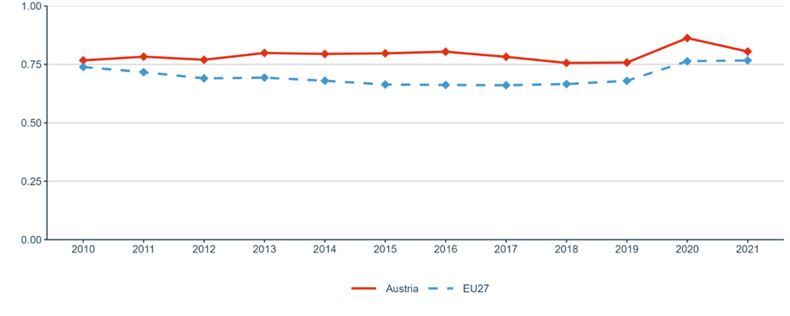
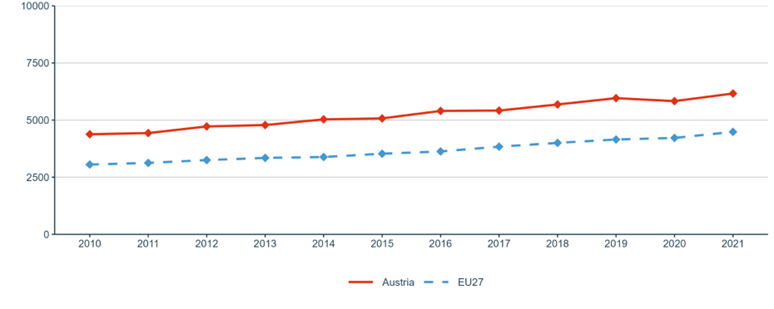
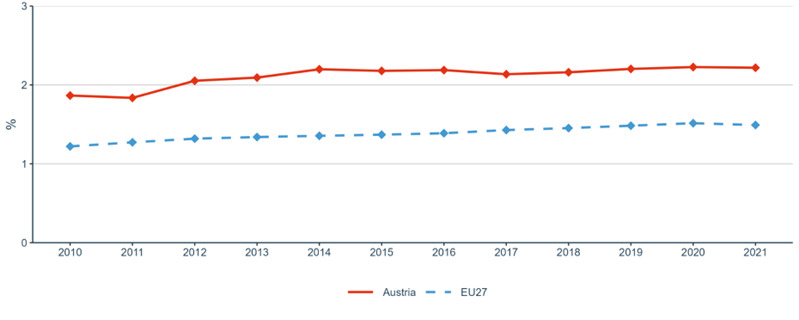
Priority 1: Deepening a truly functioning internal market for knowledge
Sub-priority 1.1: Open Science

Sub-priority 1.2: Research infrastructures
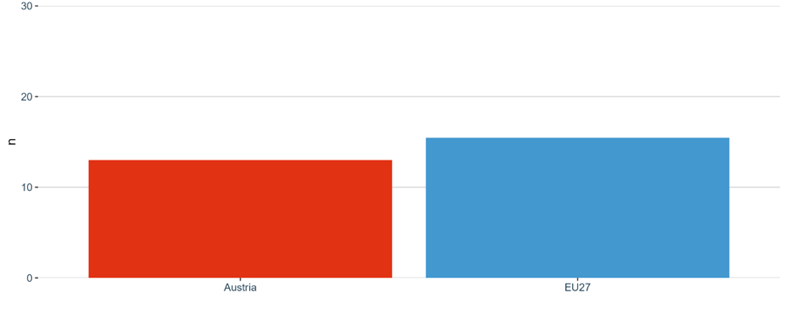
Sub-priority 1.3: Gender equality, equal opportunities for all and inclusiveness


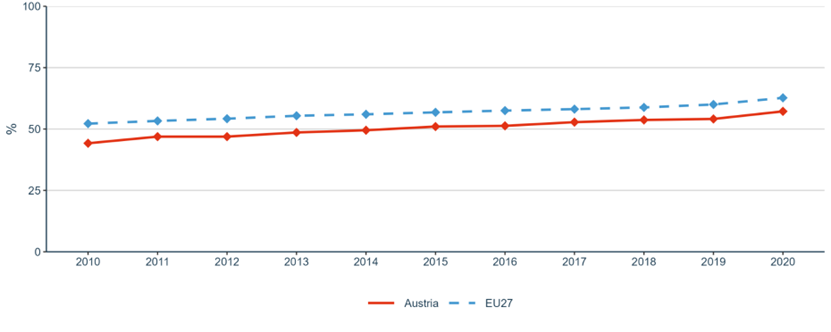

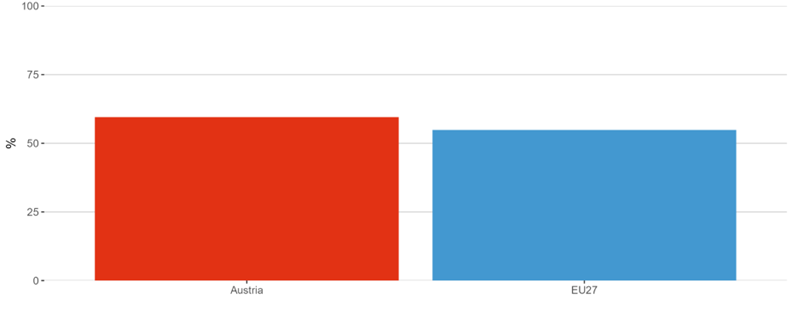
Sub-priority 1.4: Researchers’ careers and mobility and research assessment and reward systems

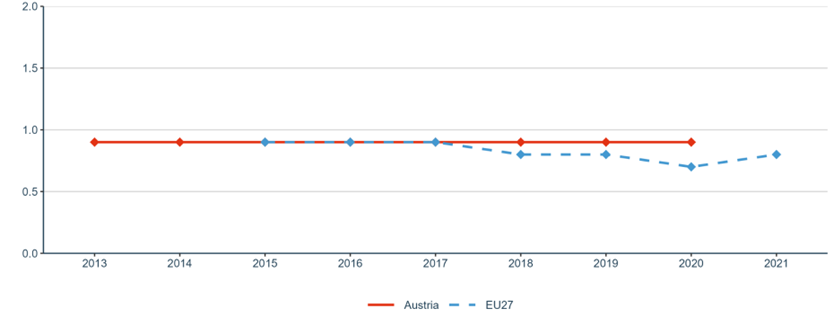

Sub-priority 1.5: Knowledge valorisation
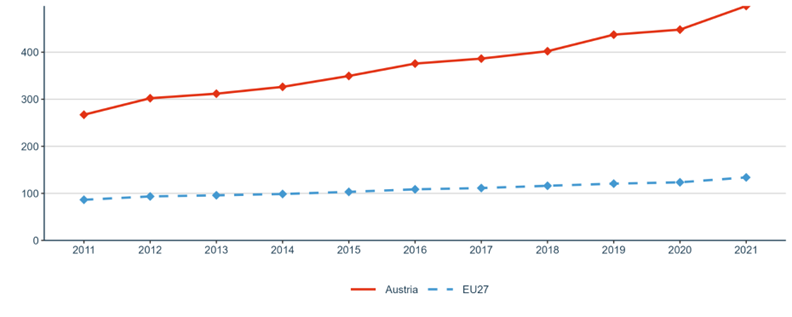


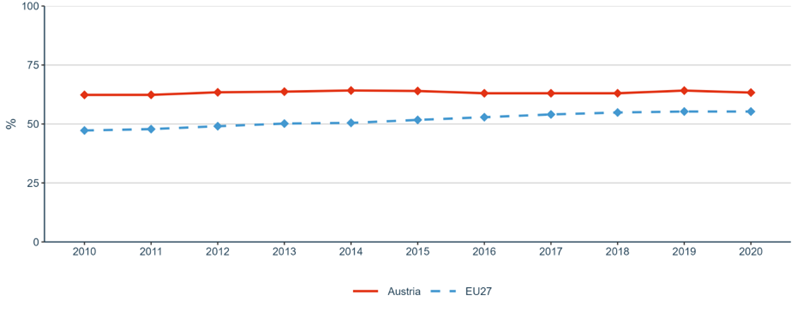

Sub-priority 1.6: Scientific leadership


Sub-priority 1.7: Global engagement


Priority 2: Taking up together the challenges posed by the twin green and digital transition, and increasing society’s participation in the ERA
Sub-priority 2.1: Challenge-based ERA Actions

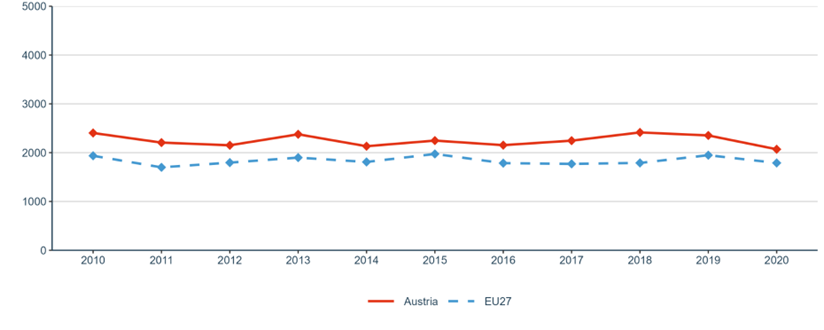
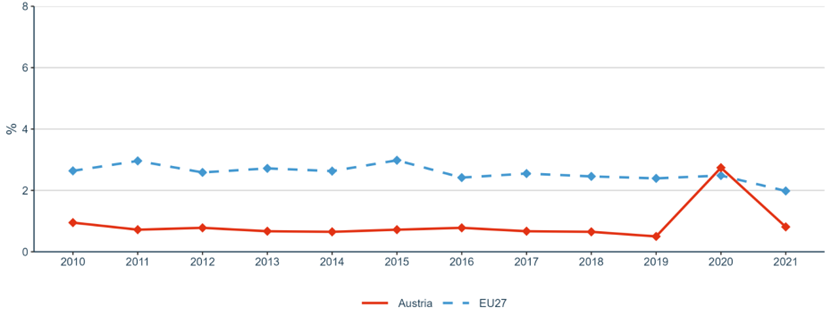


Sub-priority 2.2: Synergies with education and the European Skills Agenda

Sub-priority 2.3: Synergies with sectorial policies and industrial policy, in order to boost innovation ecosystems
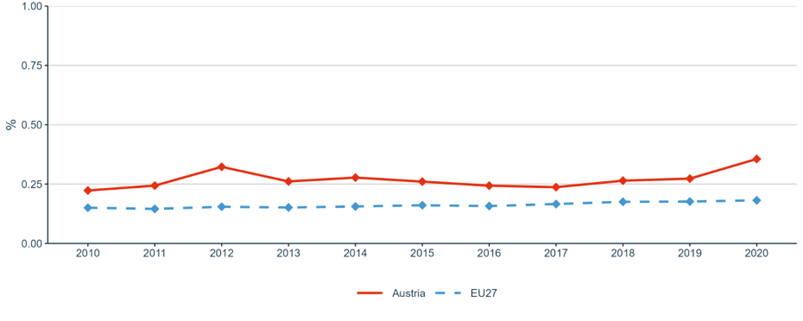
Sub-priority 2.4: An active citizen and societal engagement in R&I in all its dimensions

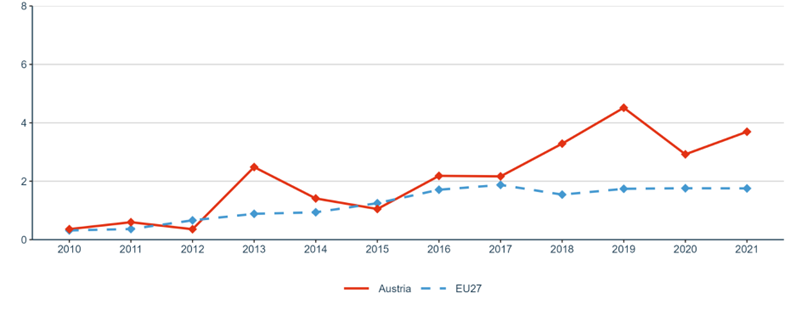
Priority 3: Amplifying access to research and innovation excellence across the Union
Sub-priority 3.1: More investments and reforms in countries and regions with lower R&I performance

Priority 4: Advancing concerted research and innovation investments and reforms
Sub-priority 4.1: Coordination of R&I investments
